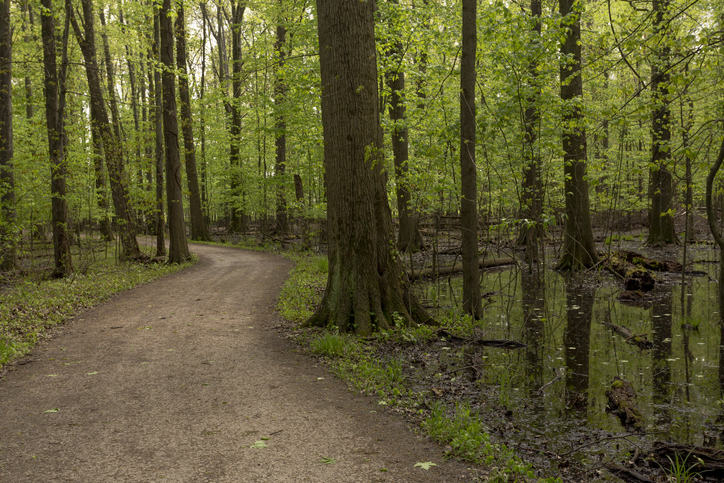Statehouse Lawn Ripped Up for More Parking
October 17, 2013
PROVIDENCE — Leave it to chronically shortsighted state government to give the city just what it doesn’t need: more impervious surface. Even as city officials work to reduce the amount of asphalt that covers the Capital City and local groups slowly coax people out of their cars and onto buses and bikes, the state Department of Administration (DOA) decides more paved parking is needed downtown.
Ron Renaud, DOA’s executive director, recently told the Providence Journal that there is a growing demand for more parking on Smith Hill. “There’s a very big shortage of parking space,” he says.
Work on the two tiers of new parking to the east of the Statehouse, along Smith Street, will replace 2,000 square feet of grass with some 40 parking spaces. This latest swath of hot top will add to Providence’s heat-island effect and help deliver pollutants more efficiently into Narragansett Bay. A 1,000 square feet of impervious surface generates 28,000 gallons of runoff annually.
Stormwater pollution is caused when rainwater and flooding from groundwater and rivers moves quickly over paved surfaces such as roads, driveways and, yes, parking lots. Along the way, this rush of water — aided by impervious surfaces — picks up tar, oil, chemicals, metals and other harmful pollutants that ultimately end up in the Ocean State’s most important natural resource.
To address that problem and the many others associated with growing amounts of impervious surface, the city is considering creating a stormwater utility district. Such a move would place a fee on asphalt-covered surfaces such parking lots. Some 2,000 U.S. cities and towns use such districts to pay for costly repairs and upgrades to storm drains and drainage systems.
But instead of working with local officials who have a different vision for their city’s future and embracing some much needed outside-the-box thinking — i.e., working to properly fund the Rhode Island Public Transit Authority and aggressively promoting public transportation as a way of getting to the Statehouse and beyond — the state aimlessly continues down the paved road of building asphalted rectangles.
The DOA also has plans to build a new parking lot on the west side of the Statehouse, on recently purchased property on Francis Street. City zoning laws prohibit new surface parking lots downtown, but the state really isn’t interested in local regulations. For proof, see the “slopes bill” that was passed this year by the General Assembly and signed by Gov. Lincoln Chafee. The bill allows sloped land to be included in buildable lot calculations — a generous gift to developers, and a move that ties the hands of local officials statewide.
Even as the DOA pushes ahead on its plan to expand Statehouse parking, the General Assembly is working on an idea to create even more downtown parking. A special legislative commission will hold its first meeting Oct. 23 to discuss the idea of building a parking garage next to the Garrahy Judicial Complex.
In the meantime, about 14 percent of the Narragansett Bay watershed is covered by streets, roofs, driveways and parking lots. Within Rhode Island, impervious cover by municipality ranges from 3 percent to 40 percent. When impervious cover is between 10 percent and 25 percent, streams show signs of degradation. When such cover is less than 10 percent, streams support a wide range of life. Only 17 municipalities in the state have less than 10 percent impervious cover. Providence isn’t one of them.
The head of the commission charged with overseeing development around the Statehouse told the Providence Journal he is opposed to these additional parking lots. “My view is there should be less parking around the Statehouse not more,” Deming Sherman, chairman of the Capital Center Commission, told the Journal. “To build a parking garage behind the Department of Administration — that’s the answer.”
Improving the state’s public transportation system and encouraging and promoting its use is a better answer.
Frank Carini is the editor of ecoRI News.
Categories
Join the Discussion
View CommentsRecent Comments
Leave a Reply
Your support keeps our reporters on the environmental beat.
Reader support is at the core of our nonprofit news model. Together, we can keep the environment in the headlines.
We use cookies to improve your experience and deliver personalized content. View Cookie Settings




This paving and any future surface parking should only be allowed if the net runoff is LESS than before it was paved. An outright ban is not an incentive for improving the status quo.
They must have learned this "more pavement, less open space" philosophy at URI, where the destruction continues unabated.
Thanks Frank for running this story on ecori.
The law Eugenia Marks referred to actually included a goal of a 35% reduction in state employee commuting miles by 2016, a substantial goal that could also help reduce congestion in and around central Providence.
Other transport issues around the State House include lack of bike parking – reportedly the State Historic Preservation Commission objected saying bike hitches would interfere with the historic district designation. And despite repeated requests for one, there is also a lack of a bus shellter at the State House even though 4 bus lines go up to that area, nor are their schedules distributed there. Recently expanded commuter rail service to Providence Station near the State House would seem to be the another reason to be promoting transit instead of undermining transit to the area.